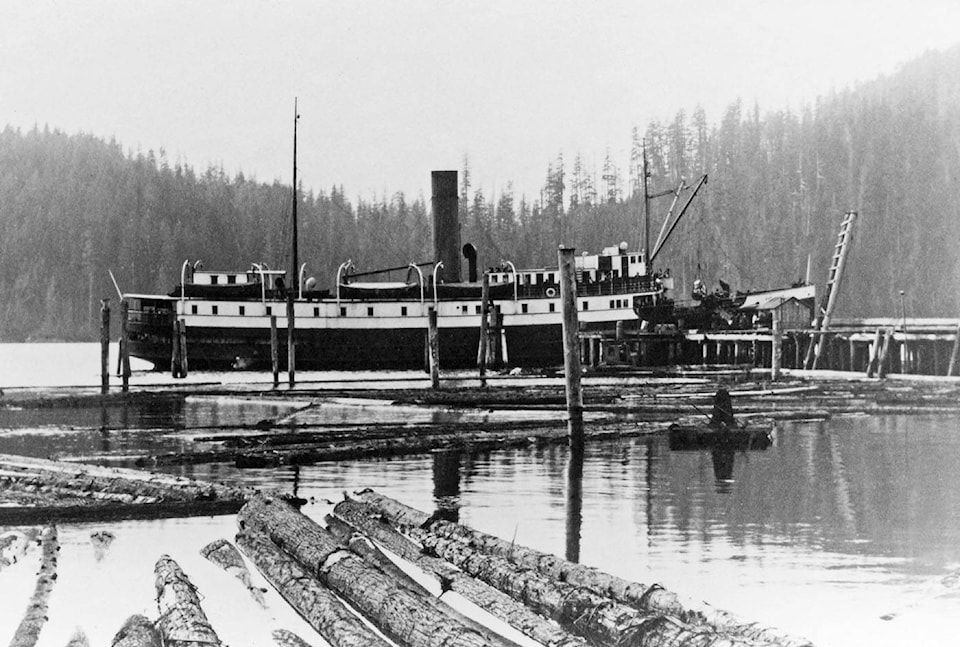By Erika Anderson
Museum at Campbell River
I was never someone fascinated with ships. Despite this, when I began to take a deeper look into the history of the Discovery Islands, I fell in love with the stories of the Union Steamships.
Whether it was the tales of captains who could navigate treacherous uncharted waterways or the social gatherings that resulted from the scheduled “Boat Days” in the remote outposts, I was constantly drawn to the wealth of stories associated with these ships.
The Union Steamship Company of BC was formed July 1, 1889, when New Zealander John Darling saw an opportunity and assembled a group of local businessmen to finance a company modelled on the successful Union Steamship Co. of New Zealand. It wasn’t until May 2, 1892, that the first ship cast off.
The SS Comox was loaded with crates of live wild stock & their feed, mail, oil, groceries and a few barrels of beer, and then headed out towards Port Neville.
It would be the first time that there would be a reliable scheduled service in the area and quickly became an integral part of life on the Coast.
One of the biggest challenges faced by the Union Steamships was navigating the complex and treacherous waterways between Vancouver Island and the mainland. The captains at the time created detailed logbooks, identifying the exact time, conditions and bearings that allowed them to navigate the winding inlets and passages. By recording the exact conditions needed to navigate through an area, they could navigate at night by following the directions they outlined in daylight.
Another technique they developed was to use their whistles, and the echoes to estimate the distance to land. In certain locations where finding a dock or entrance to a bay was particularly challenging at night, residents would be responsible for leaving a navigational light on for the skippers.
They had to choose reliable residents, as a slip up of a navigational light could be disastrous.
The SS Comox learned this the hard way in 1901 when the postmaster in Frederick Arm fell asleep with his light on.
The SS Cassiar was specially outfitted for transporting loggers between Vancouver and the camps.
Features of this vessel included a bar and a small jail. Loggers were permitted to wear their caulk boots on board. But despite allowances being made, there were still strict rules of conduct that needed to be upheld.
For example, stewards were not to be pitched over-board.
The captains did try to accommodate the needs of the remote camps. Marine law required that the ship be in motion for the bar to be open. For this reason, some of the camps installed two docks, about 100 yards away from each other.
If the ship travelled at “drinking speed,” the bar could be open for half an hour, bringing a little merriment to the loggers. Of course should anything get out of hand, the on-board jail would prove a useful feature.
I could go on all day, sharing stories like the time fifty head of cattle on board the SS Camosun had an on board stampede, but for now, I hope that you can picture these ships and their unique casts of crew and passengers as you look out on the rugged coastal waterways.
If you want to get out and explore some of those waterways, join the Museum at Campbell River on their summer historic boat tours. Learn more at crmuseum.ca/historic-boat-tours
